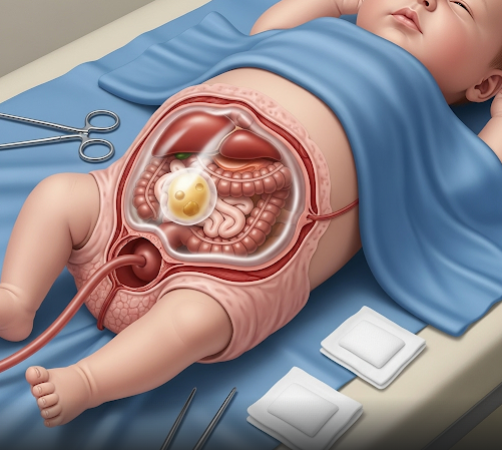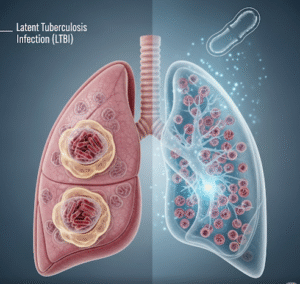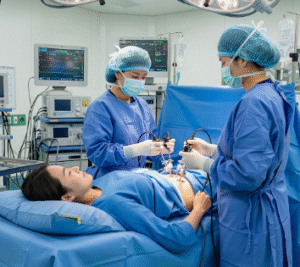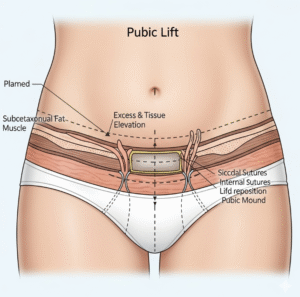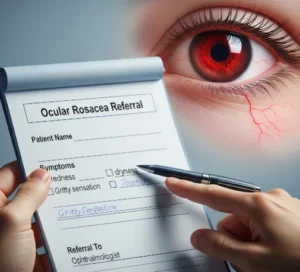Overview
Omphalocele is a congenital birth defect where an infant’s intestines, liver, and occasionally other abdominal organs protrude through the belly button (umbilicus) into a sac covered by a thin membrane. This condition occurs during fetal development when the abdominal wall does not close properly. It can range from small (involving only a few loops of intestine) to large (involving multiple organs). Omphalocele often coexists with other birth defects or genetic conditions, making early diagnosis and comprehensive care essential.
What is Omphalocele?
Omphalocele is a type of ventral wall defect that develops in the early stages of pregnancy. Normally, the baby’s abdominal organs grow outside the body temporarily and return inside by the 10th week of gestation. In cases of omphalocele, this return does not occur, and the organs remain outside, covered by a protective sac made of amniotic membrane and peritoneum.
It is typically diagnosed during prenatal ultrasound and confirmed at birth. Omphalocele is different from gastroschisis, another abdominal wall defect, because in omphalocele, the protruding organs are contained within a sac and the umbilical cord inserts directly into it.
Symptoms
Symptoms of omphalocele are visible at birth and may include:
- A soft, transparent sac protruding from the belly button, containing intestines, liver, or other organs
- Abdominal cavity that appears smaller than normal
- Difficulty with breathing if the lungs are underdeveloped
- Feeding issues after birth
- Presence of other abnormalities or syndromes, such as cardiac defects or chromosomal disorders
Causes
The exact cause of omphalocele is not fully understood, but it occurs due to a failure of the abdominal wall to close properly during early fetal development. Possible contributing factors include:
- Genetic mutations or chromosomal abnormalities
- Environmental influences during early pregnancy
- Disruption in the formation of body tissues during the first trimester
- Unknown spontaneous errors in development
Risk Factors
Several factors may increase the likelihood of having a baby with omphalocele:
- Advanced maternal age
- Use of alcohol, tobacco, or illicit drugs during pregnancy
- Preexisting maternal conditions such as obesity or diabetes
- Family history of congenital defects
- Genetic syndromes such as Beckwith-Wiedemann syndrome, Trisomy 13, or Trisomy 18
Complications
Omphalocele can lead to serious health complications, especially if other organs or systems are involved:
- Infection of the exposed organs if the sac ruptures
- Breathing difficulties due to lung underdevelopment
- Digestive problems or feeding issues
- Congenital heart defects or chromosomal abnormalities
- Slow growth or developmental delays
- Long-term abdominal wall weakness or hernias
Prevention
While not all cases of omphalocele can be prevented, the risk may be reduced through:
- Preconception counseling and prenatal care
- Avoiding alcohol, tobacco, and illicit drugs during pregnancy
- Taking folic acid supplements before and during early pregnancy
- Managing maternal health conditions like diabetes or hypertension
- Early genetic screening and counseling for at-risk families
Treatment Options in Korea
South Korea offers state-of-the-art prenatal and neonatal care for complex congenital conditions like omphalocele. Management begins during pregnancy with:
- Prenatal diagnosis using high-resolution ultrasound and fetal MRI
- Genetic testing to check for associated syndromes
- Planned delivery at a tertiary care center equipped with a neonatal intensive care unit (NICU)
Postnatal treatment depends on the size of the omphalocele:
- Small omphaloceles may be repaired surgically soon after birth
- Large omphaloceles may require staged surgeries — starting with protecting the organs and gradually reducing them into the abdomen
- Breathing support, nutritional support, and infection control during recovery
- Long-term follow-up with pediatric surgery, cardiology, genetics, and developmental specialists
Leading hospitals in Korea such as Seoul National University Children’s Hospital, Asan Medical Center, and Severance Hospital offer multidisciplinary teams skilled in managing omphalocele from diagnosis to surgical correction and long-term care.

